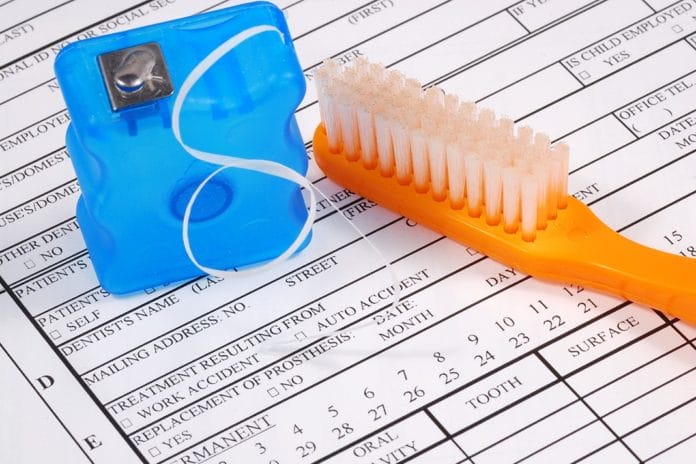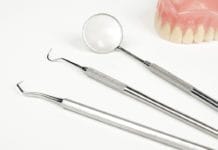It is no secret our nation has some controversial and serious concerns regarding healthcare, and oral healthcare is no exception. In fact, oral health is often overlooked completely, as leadership struggles to address healthcare issues. That may be changing, though, as a victory for dental health advocates was recently accomplished in the form of the Action for Dental Health Act.
What is the Action for Dental Health Act?
The Action for Dental Health Act is a bill designed to provide federal funding for the dental health needs of the United States underserved populations1. This would include dental disease prevention through improved oral health education, reduction of geographic and language barriers, improved access to care, among other initiatives2. This is considered a huge victory for the dental health community, and the healthcare community as a whole.
The bill was a bipartisan effort brought to the House of Representatives by Congresswoman Robin Kelly and Congressman Mike Simpson. It was passed with a ninety percent favorable vote in 20171. An interesting fact regarding Congressman Mike Simpson is that he was a practicing dentist before serving in the House of Representatives4, showing that healthcare professionals getting involved in the workings of government can have a positive impact on our nation’s health!
The bill moved on to the Senate in 2018 and was sponsored, once again in a bipartisan effort, by Sen.’s Cory Booker, Mazie Hirono, Bill Cassidy, and Tim Scott. After a couple of amendments, it was passed in October 2018 and signed into law by President Trump in December 20181. The passage of this bill into law marks a turning point in the way dental health needs are viewed and prioritized by federal healthcare agencies.
What issues will the Action for Dental Health Act address?
According to the congressional library summary of the Action for Dental Health Act, it seeks to address some very specific dental healthcare problems through the funding of programs designed to solve these problems on the national, regional, and local levels2. These issues include:
- The improvement of oral health education
- Reduction of geographic, language, and cultural barriers in preventing dental care
- Establishment of dental homes (primary dental service providers for patients)
- Reduction of unnecessary ER visits which would be better treated in a dental office setting
- The improvement of dental care in nursing homes
While these goals may sound lofty, there are already organizations in place that could address many of these issues with proper funding and expansion. There will also be numerous opportunities for hygienists to become involved! Dental hygienists are in a prime position to provide education and preventative services to underserved populations in order to reduce overall healthcare costs and reduce the need for emergency treatment.
How will the Action for Dental Health Act affect the dental hygiene profession?
The Action for Dental Health Act will likely highlight the dire need for a mid-level dental practitioner to fill the growing access to care void. The most sensible way to fill this need would be to further the development of the Advanced Dental Hygiene Practitioner, which is a provider model already in practice in many states3. With more states approving legislation to allow for the practice of Advanced Dental Hygiene Practitioners, access to care would be improved, similar to the way Physician Assistants have improved access to care in the medical sector. This initiative has been tirelessly pursued by the American Dental Hygienists’ Association, and hopefully, the Action for Dental Health Act will be an advancement to their efforts.
Registered Dental Hygienists interested in taking this career path would need to complete a masters degree level program and obtain licensure from their state of residency. Once licensed, ADHP’s can perform basic restorative work such as fillings, as well as preventative dental hygiene procedures.
In addition, dental hygienists could also choose to become involved in the development and implementation of community outreach programs for underserved populations, which will likely become more prevalent through the Action for Dental Health Act. By participating in preventative initiatives such as sealants, fluoride, and most importantly dental health education, dental hygienists can be at the forefront for positive change.
We, as dental hygienists, should view the Action for Dental Health Act as an overwhelmingly positive step forward towards the improvement of oral health in America. It seeks to accomplish the same things we as a profession seek to accomplish every day, and I’m sure dental hygienists will be some of the most active supporters of its cause.
References
- “New Law Seeks to Improve Access to Oral Health Care for Underserved Patients.” org, American Dental Association, 12 Dec. 2018, www.ada.org/en/press-room/news-releases/2018-archives/december/new-law-seeks-to-improve-access-to-oral-health-care-for-underserved-patients?utm_source=adaorg&utm_medium=adahomerotator&utm_content=ADHLaw.
- “Library of Congress-Action For Dental Health.” gov, Congressional Library, 11 Dec. 2018, www.congress.gov/bill/115th-congress/house-bill/2422
- “Expanding Access to Care through Mid-Level Oral Health Practitioners.” American Dental Hygiene Association, ADHA, Mar. 2018, adha.org/sites/default/files/Expanding_Access_to_Care_through_Mid-Level_Oral_Health_Practitioners_March_2018.pdf.
- “Biography.” United States Congressman Mike Simpson, simpson.house.gov/biography/.











